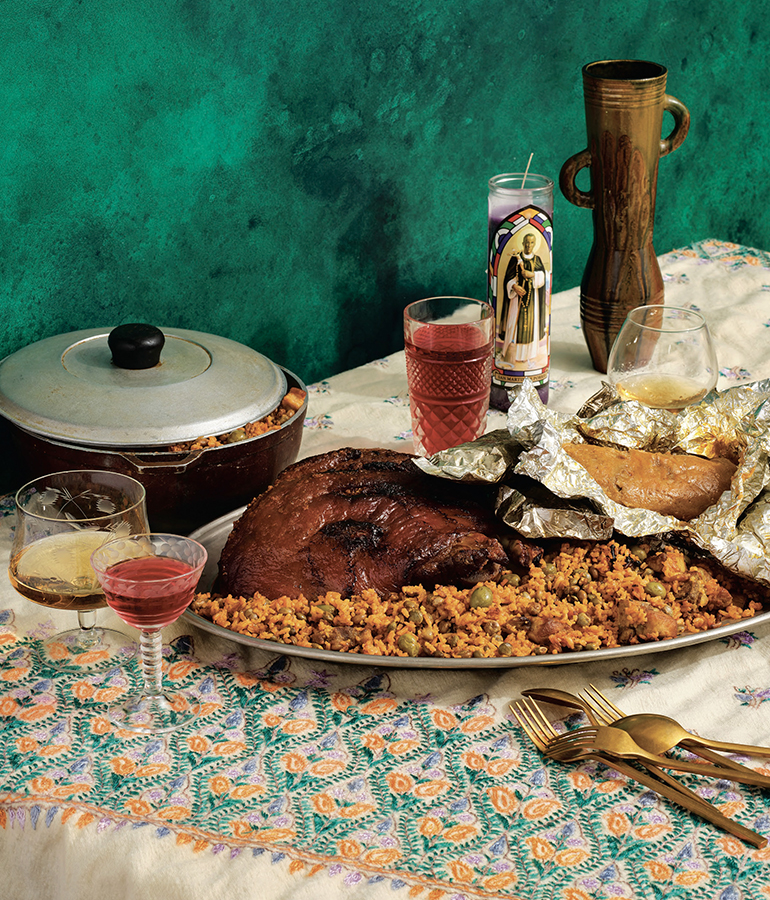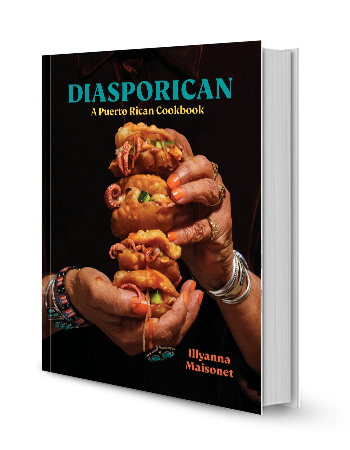AARP Hearing Center


Makes 8 to 10 servings
Every Dec. 24, our phone would ring at the crack of dawn — and we always knew who it was. It was Nana, threatening to never cook Christmas dinner again if we didn’t come over immediately and help her remove the beast of a pork roast from the oven. And without fail, we’d show up to her townhouse in the 10 minutes it took to drive the one mile from our house, and there’d be 10 other people standing in the kitchen to help her take the roast out of the oven. One, she called everyone so someone would show up. Two, it was a tool of manipulation to ensure that everyone (even those who were currently beefing with each other) would be under one roof for the holidays. Pretty sneaky, Sis. But there was nothing like that smell of garlic and oregano slapping you in the face as soon as you walked through the door. And there was nothing like seeing that glorious roast beast ascending from the oven. The skin glistened and was shatteringly crispy: You could hear it crackling from having all its fat rendered.
This two-day method is one of my Nana’s recipes that I don’t stray from. I puncture the pork shoulder all over and insert a gargantuan number of whole garlic cloves into each slit. I rub the pork with a mixture of olive oil, sazón and heaps of oregano. I purchase my pork shoulder only at the same neighborhood market where my grandma purchased hers. And I make Pernil only for Christmas. Nothing reminds me of my grandma more — and nothing brings me to tears quicker — than the smell of rendered pork fat, oregano and garlic as it fills up the house. It takes six to seven hours to cook Pernil, largely unattended, plus the time to marinate overnight. You can cover and store leftovers in the fridge for up to five days, and use it to make sandwiches.
Ingredients
- 1 (7-to 9-pound) bone-in pork shoulder or butt
- 10 to 15 garlic cloves
- 1 tablespoon olive oil
- 2 tablespoons dried oregano
- 2 tablespoons sazón
- Freshly ground black pepper
Directions
The night before cooking, using a small paring knife, poke 10 to 15 holes in the pork shoulder and stuff a garlic clove into each one. Rub the olive oil all over the pork, then thoroughly massage the shoulder with the oregano and sazón. Season liberally with salt and pepper. Place the pork in a roasting pan and refrigerate, uncovered, overnight.
Preheat the oven to 300°F.
Roast the pork shoulder, basting every hour, for 5 to 6 hours, or until the meat is very tender. Then turn the oven temperature to 400°F, arrange the pork shoulder skin-side up and roast for 1 hour more.
Let the pork rest for about 15 minutes, giving the skin a chance to crisp. Cut into large chunks, but please don’t finely shred the pork.
Serve the Pernil immediately.
Cook With Illyanna


Two more recipes from Diasporican for AARP members to try:
Brazo Gitano With Burge Road Cherry Cream Filling
Fresh cherries from an orchard in Stockton, California, lend a flavorful burst to this rolled sponge cake dessert.
This stewed meat recipe — using lamb, chicken or beef — can easily become a staple dish.
Read about Illyanna Maisonet’s latest cookbook, Diasporican.






























































You Might Also Like
‘All About Cookies’ Features Unique and Daring Recipes
Milk Bar maven Christina Tosi treats readers to a wonderland of taste and texture
Prue Leith’s Newest Cookbook, ‘Bliss on Toast,’ Shares 75 Simple Recipes
‘The Great British Bake Off’ chef turns the easy into the extraordinary
Ina Garten’s New Cookbook Is All About Easy Meals
And we’ve got three recipes for you to try, including orange marmalade-glazed ham and one-pot oven risotto